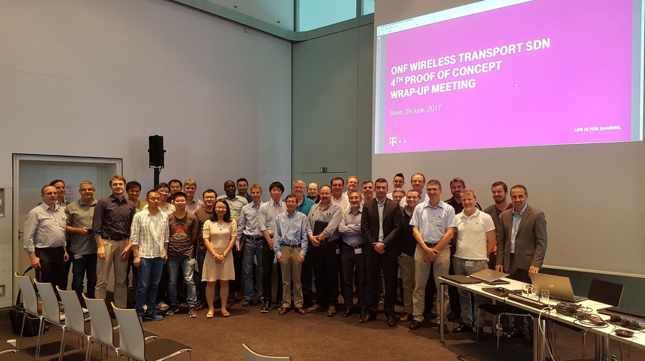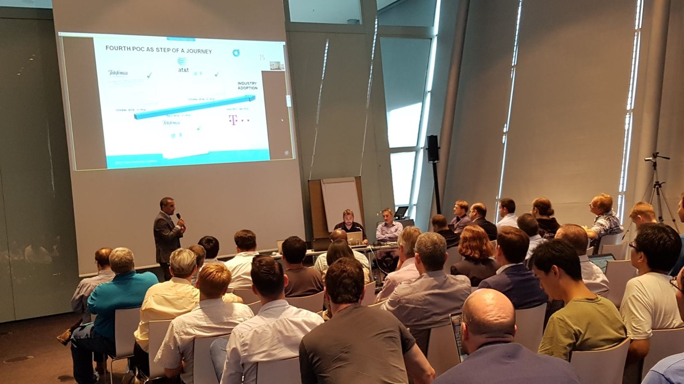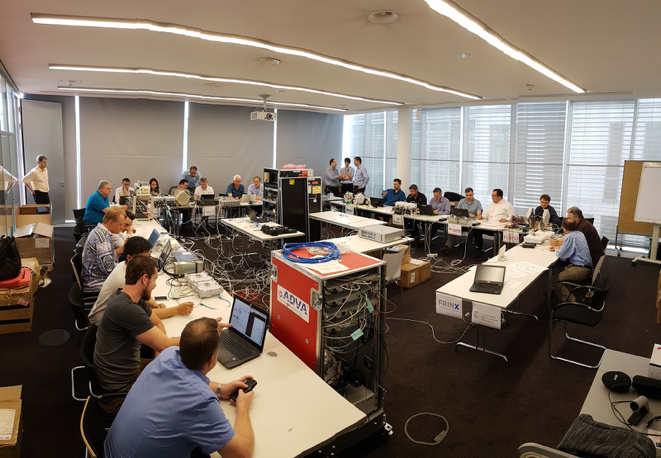In October 2015, ONF’s Open Transport Working Group completed the industry’s first multi-vendor Wireless Transport SDN Proof of Concept (PoC). The PoC was designed to encourage the development, testing, and implementation of open SDN for Wireless Transport and to demonstrate multi-layer optimization on an open SDN infrastructure. Less than two years later, the fourth PoC has just been successfully completed.
One of ONF’s goals is to promote greater commercial adoption of SDNs, and the Open Transport Working Group works tirelessly to help ONF reach its goals through the development of PoCs. In June, the group’s Wireless Transport Project Team completed its fourth PoC, which was designed to implement and test the open model defined by ONF to control wireless transport equipment, encouraging the development of applications using open interfaces and open source software.

Hosted by the ONF’s new partner member Deutsche Telekom (DT) in Germany, the PoC had wide participation from the wireless transport industry including equipment vendors, telecommunications operator representatives, software integrators and application providers. AT&T, Telefónica, Ceragon, Ericsson, Fujitsu, Huawei, NEC, Nokia, SIAE, ZTE, ADVA Optical Networking, DragonWave, Aviat, ELVA-1, Intracom Telecom, Frinx and Highstreet Technologies joined DT at the event. More than 35 representatives from these companies participated in the installations and setup, application testing in a limited environment, full testing, recording and analyzation, and wrap-up discussion.

The work on the latest PoC built upon the use cases identified in the first three PoC’s by the group. The PoC demonstrated that it is possible to have the same defined information model implemented across several vendors. The subject of this PoC was to:
- Demonstrate microwave transport implemented in a multivendor microwave network with all parameters modeled by ONF TR-532 and managed via the ODL Boron open source SDN controller SR1 version.
- Integrate the model for 1588v2 transport profile defined in “draft-ietf-tictoc-1588v2-yang-05” into MW devices.
- Demonstrate a basic connection-oriented Ethernet model integrated in the ONF Core Information Model with re-routing capabilities.
- Prove new use cases using the models implemented.


The PoC was followed by a panel discussion where the participants discussed SDN in microwave networks and how what has been demonstrated can be deployed in the field in the coming months.
The Open Transport Working Group is working to finalize a white paper about the latest PoC as an industry reference for supporting SDN in microwave networks. A video of the PoC is already available and can be viewed here.
The next PoC is currently being planned and will target integration with the ONF’s broader Cloud/SDN/NFV solution (M-CORD), the industry’s leading open source platform for 5G evolution in the metro. If you’re interested in participating in the next PoC or the working group activities, send an email to this ONF mailing list. The group meets every Tuesday at 7 a.m. PDT (3 p.m. CET) to discuss models, events and publications. Stay tuned for more details on the growth and adoption of the SDN ecosystem.
Resources:
4th Wireless Transport PoC White Paper
Applications based on Microwave model (TR-532) https://youtu.be/HZoKVKFMCyQ
Applications based on PTP Synchronization model https://youtu.be/iIHqC6JysZ4
Application based on Ethernet model https://youtu.be/ctESLYgd3s8
Wireless Power Control application https://youtu.be/jwdNGzA0mMI
Wireless Transport Network Emulator https://youtu.be/pK0Y-h4pGu4

